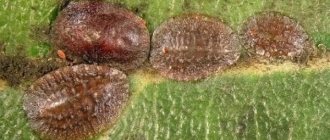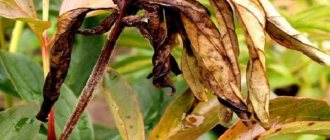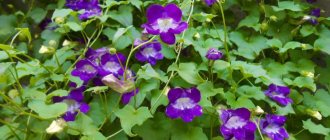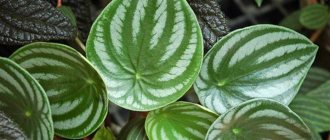Although diseases on marigolds are rare, their typical symptoms and methods of effective treatment are well known. The main thing is to carefully inspect the plantings regularly so as not to waste time.
Marigolds in bloom
Why do marigold leaves turn red?
Red foliage is not always pretty. There are several reasons for this fairly common phenomenon, characteristic of all varieties of marigolds:
- The weather is too cold. The plant should be green, but it is red due to its inability to produce chlorophyll.
- Plants are exposed to the scorching sun all day long.
- If the soil is too acidic, then a red and sometimes even purple color appears at the ends of the leaves.
You won't be able to influence the weather, so only two other reasons can be corrected. The bushes can be carefully dug up and transplanted to a more suitable place, and wood ash can be introduced into the acidic soil when loosening.
Why marigolds don’t bloom, what to do
These flowers are considered unsurpassed in the abundance of flowering: the forcing of buds from 2 months of age occurs continuously until frost. The absence of buds is a rare phenomenon, the reasons for which are:
- Drought. In the absence of rain and watering, plants may die.
- The plant is affected by spider mites. The pest sucks out the juices, which seriously inhibits the growth and flowering of marigolds. It is necessary to spray the flowerbed with acaricide.
- The landing site is too dark. Lack of sun is a serious obstacle to flowering. Chernobriv residents need at least 6 hours of bright light per day.
Typical picture: lack of power, light and watering
Marigold leaves have turned white
A very unattractive sight - whitish leaves, the edges of which dry out and curl. There are two reasons why marigold leaves turn white:
- Spider mite invasion. Urgent spraying with acaricides in 2 doses with an interval of 1 week is required.
- The crown is affected by powdery mildew. They are treated against it with systemic fungicides.
Marigold leaves curl
Slight curling of the tips of the leaves indicates that the plants are not getting enough light. It happens that seedlings are grown in insufficient light, and then immediately planted in a sunny place in open ground. The sun will quickly burn the tender leaves, they will curl, dry out and fall off. That is why seedlings must be hardened off in the afternoon.
Important! Curling leaves and massive wilting of buds are a sure sign of drought; you should urgently water the flowers.
In addition to these reasons, leaf curling is a sign of various diseases, including powdery mildew. Chlorosis also affects foliage.
How does marigold chlorosis manifest?
A plant disease caused by a severe lack of essential nutrients is called chlorosis. As a result, the most important life process – the formation of chlorophyll – is disrupted. For chlorosis in marigolds:
- the veins on the leaves remain green, but the plates themselves turn yellow;
- The tops of the plant dry out first, then the foliage becomes smaller and falls off;
- the buds become smaller and dry out;
- the root system stops developing.
Treatment consists of enriching the soil with the microelement that is lacking. Since it is quite difficult to carry out an accurate diagnosis, the best thing that can be done is to fertilize the planting with complex mineral fertilizer.
Characteristic manifestation of chlorosis
What is powdery mildew in marigolds (lat. Erysiphaceae)
The fungal disease manifests itself in the form of a clearly visible whitish coating on the leaves. It seems as if the plant is dusted with white dust. If you leave even one speck, then quite quickly the disease will cover the entire crown and spread to neighboring flowers, which still have time to grow. Treatment of powdery mildew involves systematic treatment of all plantings with fungicides containing sulfur (according to the manufacturer’s instructions).
Important! After spraying with sulfur-containing fungicides, subsequent treatments can only be performed after 2 weeks.
Gray rot (lat. Botrytis cinerea)
This fungal disease is favored by cool, damp weather. Thickened, poorly ventilated plantings suffer the most. First, the leaves darken, then brownish spots appear on them. This is the time when you can still save flowers by spraying. The fungus tends to spread to neighboring plants at a very high speed. It is best to remove and burn specimens where numerous stains have already appeared, and spray the remaining ones. The drugs “Fundazol”, “Alirin-B”, “Fitosporin-M” are suitable.
What kind of plant is this?
These magnificent flowers most likely owe their name to their velvety red-brown petals. Marigolds, otherwise known as tagetes, are an unpretentious annual fast-growing plant. Strongly branched but compact, the plant reaches a height of 20 to 100 cm. The flowers are simple or double, reaching 10 cm or more in diameter. The plant is very responsive to care and prefers fertile neutral loamy soil.
It is grown through seedlings or direct sowing in the ground. The plant is heat-loving, so it is planted in open ground after the return frosts have passed. It blooms for a long time, profusely, from May - June until autumn frosts. What the flower looks like - look at the photo.
Black spot
Delphinium most often suffers from this disease, but other flowers can also get sick. Sources of infection are soil contaminated by soil and fallen leaves. In cool weather, black spots appear on the leaves; on the back of the leaf blade they have a brownish tint.
Control measures and prevention
In the fall, plant debris is carefully removed and the soil is dug up. Before sowing, the seeds are disinfected in a raspberry solution of potassium permanganate. During the growing season, plants are sprayed with 1% Bordeaux mixture or 0.5% copper oxychloride.
Common diseases
The special aroma is formed due to the high content of phytoncides. Diseases and problems with the structure of the bush most often arise due to improper care.
Why don't they bloom?
The lack of color can be caused by an abundance of fertilizers and moisture (the bush devotes all its energy to the formation of green mass), drought, lack of air in the soil or lack of natural light.
How to diagnose the problem? The bush looks healthy, but there is no ovary on the stem. A distinctive feature of this problem is thick and fleshy leaves. What to do to activate flowering?
- Adding sun. The sun's rays will make the flowering lush and chic. Marigold seedlings should be planted in areas that receive moderate amounts of sunlight (scorching rays will cause the bush to gradually dry out). Natural light in the morning and evening activates flowering, and on a hot afternoon the bush can be covered with agrofibre, forming an artificial shadow.
- We monitor watering. When the first buds form, you need to reduce the number of waterings. Excessive moisture inhibits flowering and provokes putrefactive processes. It is advisable to water the bushes once every 2 days (the water should be warm).
- We apply fertilizers sparingly. It is allowed to feed the bush only when the stem is higher than 10 cm. Complex fertilizers must be applied before or after flowering. It is forbidden to use fresh and clean humus. A suitable option is a mixture of nitrogen and potassium, phosphorus and trace elements. For 10 liters of water add 2 tbsp. fertilizing and apply to the soil in the evening.
- We ensure air flow. The soil needs to be loosened and weeded after each watering. For the best effect, wet, loose soil should be covered with hay or sawdust - this will minimize the rapid evaporation of moisture.
Why is root rot dangerous and how to prevent it?
Young marigolds often suffer from blackleg, and adult plants from root rot. Stunted growth, yellowing leaves and wilting of the bush are a sure sign that root rot has appeared. The affected bush cannot be saved, but the disease can be prevented.
The main condition for the health of marigolds is proper care:
- the soil in which flowers are planted must be loose;
- watering should be regular, but not abundant, so that excess moisture does not provoke the development of the disease;
- it is necessary to ensure free access of air to the root system; for this, the soil is loosened;
- regular weeding and weed removal;
- You cannot add fresh manure to the soil in the flower bed;
- Plants cannot be replanted where sick Chernobrivts grew a year earlier.
Sick marigolds must be promptly removed from the flowerbed.
Pests
Why do rose leaves curl and dry out?
The plant is poisonous to many insects. Even the mole cricket, a hardy animal, avoids it. But still, there are pests that can eat the foliage and flowers of marigolds.
Who eats marigolds
The most common pests in gardens and flower beds that readily eat marigold petals, leaves and stems are:
- Snails and slugs. In rainy weather and in damp corners of the garden, they are easy to spot under bushes, and sometimes even on leaves. If there are not many pests, then you can use the manual assembly method. For large populations, it will be necessary to sprinkle the plantings with the drug "Thunderstorm" or with home remedies (ash, pine needles, crushed eggshells, sleeping coffee grounds).
- Thrips. Very small (up to 2 mm in length) insects suck sap from the above-ground parts of plants. Their first traces can be detected by carefully examining the petals. Pinpoint punctures are a sure sign that thrips have settled in the flowerbed. The drugs “Aktara”, “Zubr”, “Iskra Zolotaya” help against this pest.
- Caterpillars. Some species of butterflies lay eggs on the undersides of leaves. After some time, caterpillars hatch from the clutches, begin to gnaw leaves and buds, and then wrap themselves in them. If it is not known exactly who eats the marigolds, then treatment is carried out with a broad-spectrum insecticide, for example, Aktara.
Snail eats marigold bud
Spider mites on marigolds
In dry and hot summers, the population increases rapidly, covering large areas. The first alarming symptom is a whitish coating on the foliage. Ticks are so small that it is almost impossible to see them without magnifying glasses. Most often, young plants suffer from them. A sure sign is if cobwebs appear on the marigolds, but you should find out in advance how to deal with mites.
In the fight against spider mites, specialized acaricides are used, for example, Actellik, Fitoverm. Natural remedies are also popular. For example, tobacco infusion: 200 g per 2 liters of water - leave for 2 days, and then dilute with water to 10 liters. The planting solution should be sprayed at dawn and after sunset until the cobwebs in the leaf axils disappear.
Marigolds depleted by spider mites
Aphids on marigolds
Tiny green or gray insects (3-7 mm in length) easily pierce stems and leaves with their proboscis, sucking the juices out of them. Colonies grow quickly if pests are not controlled. They especially love buds.
To get rid of aphids, you should first wash off as many insects as possible from the flowers with water (this will not kill them, but will free up the surface for absorption of the drug), and then carry out chemical treatment. The drugs Fitoverm, Actofit, Intavir are effective.
Important! The treatment is carried out twice, observing the interval recommended by the manufacturer.
Aphid colony
Methods of administration
Only inflorescences are used for medicinal purposes.
You can only harvest open buds. Marigolds should be collected in late spring and early summer; it is during this period that they are abundant in nutrients. Dry flowers in the open air without exposure to direct sunlight (it is acceptable to use an electric dryer). They retain their value all winter.
Let's look at the most promising plant-based recipes.
Tincture
- 100 grams of dried inflorescences;
- 500 ml vodka.
- Place flowers at the bottom of a glass jar.
- Pour vodka. Seal the container hermetically.
- Leave for 2 weeks at room temperature (in any dark room).
- Strain and store in the refrigerator.
You should drink the medicine from marigolds 5-10 ml per day 30 minutes after meals. It is effective for colds and helminthic infestations. Sometimes the tincture is used to treat menopause and eliminate the symptoms of premenstrual syndrome. Duration of treatment – up to 1 month.
Decoction
- 3 Chernobrivtsev flowers;
- 400 ml water.
- Brew flowers with hot water.
- Cook over low heat for about 10-15 minutes. The composition must be stirred every 2-3 minutes.
- Strain.
Preventive control measures
Experienced gardeners say that marigolds are a plant that is rarely affected by pests. They are “active” only if the weather is rainy or the air in the room is dry.
To prevent slugs and snails, caterpillars and thrips from harming them, it is important to promptly place containers of bleach on the windowsill or in the greenhouse. Bleach has a pungent odor that repels pests . If, for preventive purposes, you treat crops with an infusion of onion peels, then spider mites are not afraid of them.
We recommend that you familiarize yourself with our other materials:
- How and when to plant marigolds in open ground?
- How to care for black-necked animals on the street?
- How to grow and care for marigolds at home?
- How to grow seedlings yourself?
- What to feed for abundant flowering?
Main diseases and methods of their treatment
Marigolds are not too demanding to grow; they bloom for a long time from the first days of summer until frost. The reason for the popularity of flowers is their ease of care and minimal susceptibility to diseases and pests.
Due to their specific aroma, they are often planted in garden beds, as marigolds prevent diseases and pests of vegetable crops. But sometimes improper care or uncomfortable weather conditions provoke diseases in the flowers themselves. They should be remembered and prevented immediately when they first appear.
Blackleg
This is the most common problem with marigolds. It affects mainly young, immature plants. At the initial stage of the disease, the lower part of the stem is surrounded by a light coating, which gradually forms into white spots. After some time they turn brown and cause rotting.
In a short period the flower dies. In such a situation, it is better to remove the affected plants and burn them to avoid contamination of the soil. To prevent and prevent disease, seeds are treated with fungicides before sowing. The same procedure is carried out with the soil before planting.
Root rot
The disease appears on mature plants. In too wet summers, marigolds planted in open ground are susceptible to root rot. The bushes turn yellow, slow down, and subsequently wither and die. Infected plantings can no longer be saved.
Only proper care can preserve the health and appearance of the plant crop. To do this, the soil should be constantly loosened and watered regularly, but not too much. Weeding and removing weeds will not hurt.
The seeds do not germinate or germinate very rarely.
— Seeds may be to blame for this if they have expired
, and there is no germination at all, or they germinate very rarely. Be patient and have new fresh seeds, you will have to replant.
— Seed germination requires special conditions
: scarification (filing the seed coat), stratification (exposing the seeds to cold). Before planting the seeds, carefully read on the bag what conditions need to be created for the seeds to germinate: the seeds must be on the surface or germinate in greenhouse conditions, the seeds of some plants germinate only in the light or only in the dark.











